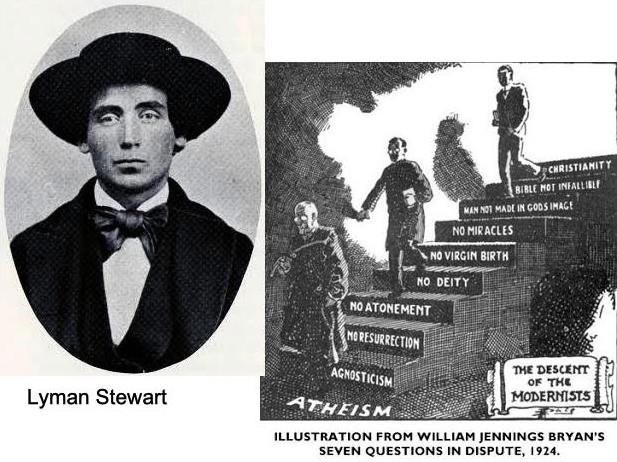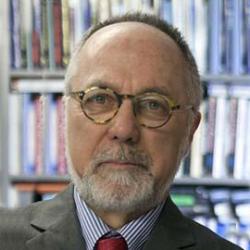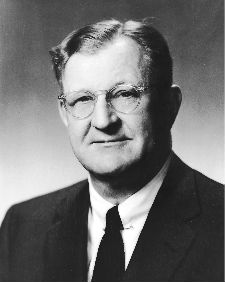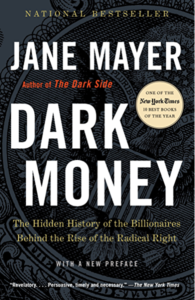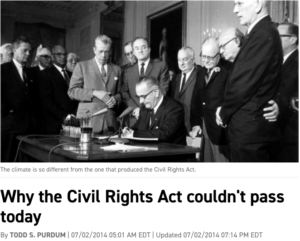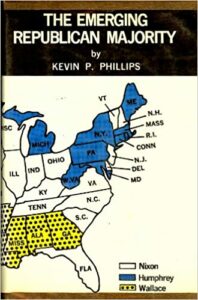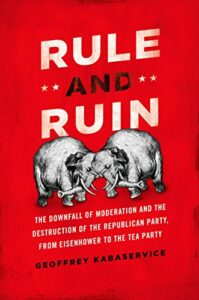Here is an observation from another author on the theme of the previous post, the historical pathway taken by the Christian right prepared them to respond to his call to follow him:
The facile explanation for this apparently improbable union between the proponents of “faith,” “values,” and “family” and the profoundly impious real estate huckster and serial philanderer is that the Christian right hypocritically sacrificed its principles in exchange for raw political power. But this purely transactional explanation for the Trump-evangelical merger elides the deeper bond between Trump and his devoted flock. Although Trump is illiterate in evangelicals’ lexicon and spent his adult life flagrantly contravening their sexual mores, his evangelical supporters are nonetheless starstruck. He may not be one of them, but they idolize how he loudly and fearlessly articulates their shared grievances—that alien anti-Christian, anti-American ideologies have taken over the government, judiciary, media, education, and even popular culture and forced edicts upon a besieged white Christian majority, cowing them into submission by invoking “political correctness” that aims to censor, silence, and oppress them.
The Trump-evangelical relationship represents an intense meeting of the minds, decades in the making, on the notion that America lies in ruins after the sweep of historic changes since the mid-twentieth century, promising nondiscrimination and equal rights for those who had been historically disenfranchised—women, racial minorities, immigrants, refugees, and LGBTQ people—eroded the dominance of conservative white Christianity in American public life. Trump apparently has not cracked the binding on the Bible he waves in the air while speaking to evangelical audiences, but he fluently speaks the language of conservative white Christian backlash against the expansion of rights for previously disenfranchised and marginalized Americans. Trump not only gives voice to the Christian right’s perceived loss of religious dominance; he pounds away at grievances over white people losing ground to black and brown people and immigrants, of men losing ground to women, of “originalist” judges under the sway of liberal intruders demanding “special” rights. Trump reassures white evangelical voters that he will restore the America they believe has been lost—the “Christian nation” that God intended America to be, governed by what they claim is “biblical law” or a “Christian worldview.”
The evangelical adoration for Trump is rooted in far more than his willingness to keep a coveted list of campaign promises, like appointing anti-abortion judges or expanding religious exemptions for conservative Christians, such as bakers who refuse to make a cake for a gay wedding. Trump inspires this high regard because he is eager to use strongman tactics in order to carry out those promises. For decades, the Christian right has successfully used the mechanisms of democracy, such as voter registration and mobilization, citizen lobbying, and energetic recruitment of religious candidates to run for office, to advance its agenda. In these efforts, conservative evangelicals are driven not by a commitment to liberal democracy but rather by a politicized theology demanding that they seize control of government to protect it from the demonic influences of liberalism and secularism. Previous presidents pandered to evangelicals, but Donald Trump constitutes the culmination of a movement that has for decades searched for a leader willing to join forces in this battle without cowering to shifting political winds. In Trump, the Christian right sees more than a politician who delivers on promises; they see a savior from the excesses of liberalism.
And for their purposes, Donald Trump arrived on the political scene not a moment too soon. He burst in at a critical moment, when top Christian right leaders were becoming painfully aware they were losing their demographic supremacy. In 2006, white evangelicals made up 23 percent of U.S. adults, a formidable segment of the population. A short decade later that number had dropped to 17 percent, owing to rising proportions of nonwhites and people unaffiliated with religion. But because white evangelicals are uniquely politicized and highly mobilized to vote, they can exert an outsize influence on our elections and political culture if they unify around a candidate or cause. In the 2016 election, white evangelicals made up 26 percent of voters and fully one-third of Republican voters. Eighty-one percent of those people voted for Donald Trump.
Although their overall numbers are dropping, Trump’s presidency has given white evangelicals new life as the most influential political demographic in America. In office, he has been beyond solicitous to the Christian right leaders who support him. He has given them the political appointees and judges to implement their political agenda, delivering in ways that even they likely never imagined. As the veteran operative Ralph Reed, now head of the advocacy group Faith and Freedom Coalition, proudly told his annual conference in June 2019, “there are more Christians serving in the Cabinet, serving on the White House staff, in the subcabinet,” than under “all previous presidents combined.” When a decision needs to be made in the Trump White House, Reed went on, “the people who are writing memos and in the meeting advising the president are on our side, more than ever before.”
Posner, Sarah. 2020. Unholy: Why White Evangelicals Worship at the Altar of Donald Trump. New York: Random House.

